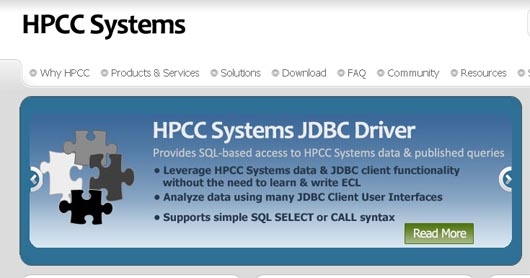Linux is a Unix-like computer operating system assembled under the model of free and open source software development and distribution; its development is one of the most prominent examples of free and open source software collaboration, which allows its underlying source code to be used, modified, and distributed—commercially or non-commercially—by anyone.
The defining component of Linux is the Linux kernel, an operating system kernel first released 5 October 1991 by Linus Torvalds. Today, Linux systems are used in every domain, from embedded systems to supercomputers, and have secured a place in server installations often using the popular LAMP application stack.
The primary difference between Linux and many other popular contemporary operating systems is that the Linux kernel and other components are free and open source software. Linux is not the only such operating system, although it is by far the most widely used. It derives much of its basic design from principles established in Unix. Such a system uses a monolithic kernel, the Linux kernel, which handles process control, networking, and peripheral and file system access.
For this post we have compiled 10 of the most exceptional Linux tools for developers across a wide range of categories which will help in simplifying your web related tasks and keep your website a step ahead of the competition. We hope you will find a few of these Tools and Applications below handy for your development needs.
1. Libreplan : Project Planning, Monitoring Tool

LibrePlan was designed to handle multiple projects and resources interact to carry out the work inside a company. It is a collaborative tool to plan, monitor, control projects. It helps to create Gantt charts, Track hours, Cost analysis, Earned Value Management, Resource allocation and lot more.
2. Gimp : GNU Image Manipulation Program

GIMP is the GNU Image Manipulation Program. It has many capabilities. It can be used as a simple Paint program, with full suite of painting tools including Brush, Pencil, Airbrush, Clone, etc. It supports Photo Enhancement, Digital Retouching, Image format converter, Animation etc.
3. Inkspace : Vector Graphics Editor

Inkscape is a vector graphics editor, with capabilities similar to Illustrator, CorelDraw, or Xara X, using the W3C standard Scalable Vector Graphics (SVG) file format. It supports many advanced SVG features (markers, clones, alpha blending, etc.) and great care is taken in designing a streamlined interface. It is very easy to edit nodes, perform complex path operations, trace bitmaps and much more.
4. HPCC System

HPCC is a proven and battle-tested platform for manipulating, transforming, querying and data warehousing Big Data. It supports two type of configuration. Thor is responsible for consuming vast amounts of data, transforming, linking and indexing that data. It functions as a distributed file system with parallel processing power spread across the nodes. Roxie, the Data Delivery Engine, provides separate high-performance online query processing and data warehouse capabilities.
5. Power Dns

PowerDNS is a DNS server which helps to resolve the name server. It supports geographic load balancing and failover. It stores zone information to relational database and BIND style file.
It consist of two parts: the Authoritative Server and the Recursor. The Authoritative Server will answer questions about domains it knows about, but will not go out on the net to resolve queries about other domains. The Recursor, conversely, by default has no knowledge of domains itself, but will always consult other authoritative servers to answer questions given to it.
6. Kaltura : Video Platform

Kaltura enables video management, publishing, syndication and monetization, as well as providing a robust framework for managing rich-media applications, and developing a variety of online workflows for video. Publishers could host their video content in their own data center. Web developers could use this software to to provide video management and delivery solutions to the web sites.
7. ZeroC : Internet Communications Engine

The Internet Communications Engine (Ice) is a modern object-oriented middleware with support for C++, .NET, Java, Python, Objective-C, Ruby, and PHP. Its latest release has support for Android and .NET Framework. It helps to build distributed applications easier as it takes care of all interactions with low-level network programming interfaces. It supports cross-language and cross-platform communication.
8. MySQL Workbench

MySQL Workbench is a visual database design tool. The tool is specifically for designing MySQL database. MySQL Workbench provides DBAs and developers an integrated tools for Database Design & Modeling, Query browser, Database Administration.
9. Tiki Wiki CMS Groupware

Tiki Wiki CMS Groupware is a full-featured, web-based, multilingual (35+ languages), tightly integrated, all-in-one Wiki+CMS+Groupware using PHP, MySQL, Zend Framework, jQuery and Smarty. Actively developed by a very large international community, Tiki can be used to create all kinds of Web applications, sites, portals, knowledge bases, intranets, and xtranets. It has support of wiki, forum, Blog, Articles, Image gallery, map server, link directory, Bug tracker and lot more.
10. Trac : Intregrated SCM & Project Management

Trac is a lightweight project management tool that is implemented as a web-based application. It has an enhanced wiki and issue tracking system for software development projects. Trac will impose as little as possible on a team’s established development process and policies.
